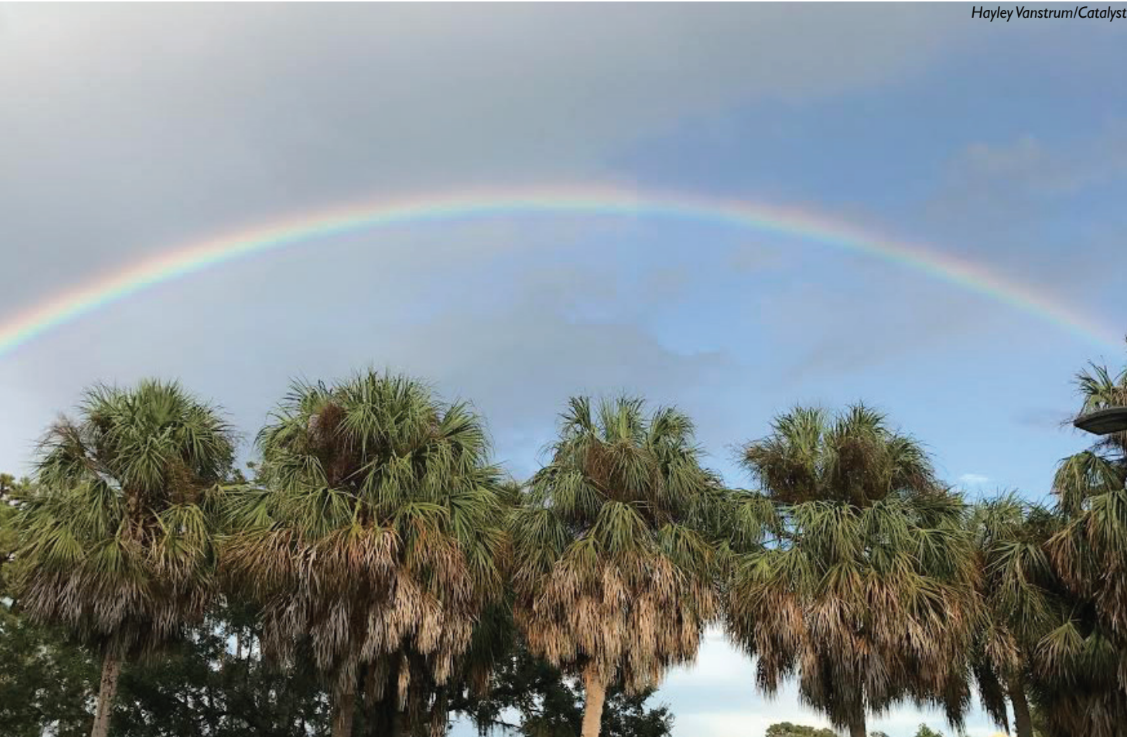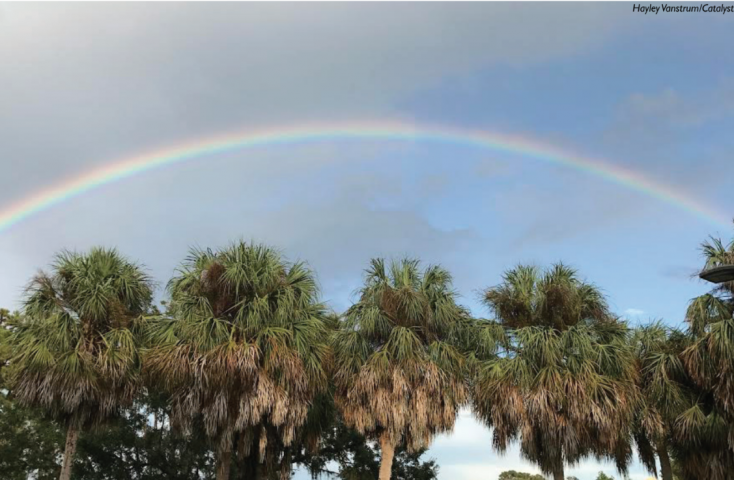
In Spring 2019, the Arbor Day Foundation recognized New College as a Tree Campus USA. After a semester with this status, returning students wondered how removing trees fits in with New College’s landscaping and the college’s newly pledged commitment to the health of its trees and environment.
According to a New College News article from April 2019, being a Tree Campus USA entails having a plan, budget and community all dedicated to caring for trees. In order to qualify for the program, New College had to meet five distinct standards: the formation of a Campus Tree Advisory Committee, the creation of a Campus Tree Plan, the maintenance of a Campus Tree Program with dedicated annual expenditures, observance of Arbor Day and the completion of a service learning project. The Campus Tree Advisory Committee, made up of Professor of Biology Brad Oberle, Landscape Coordinator Robert Audet, environmental studies thesis student Deric Harvery and Sarasota County Commercial Horticulture Extension Agent Marguerite Beckford, works to uphold the Campus Tree Plan and make New College a friendlier place for trees.
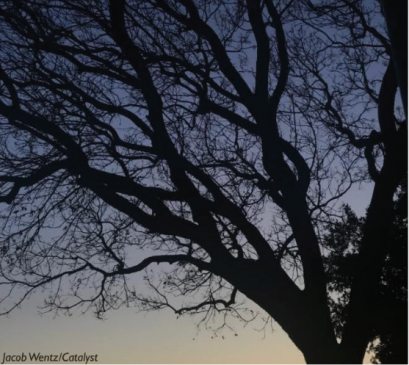
“Participating in the program promotes campus sustainability by educating people in the community about the value of trees so that we can work together to enhance our urban forest,” Oberle said.
However, enhancing an urban forest does not only mean planting and maintaining trees around campus. The removal of trees, an action that tends to be seen as environmentally harmful, is just as important to keeping New College’s campus environment healthy and safe. Angela McTigue, recent Environmental Studies graduate, former Student Landscape Representative and current Facilities Planning Coordinator at Physical Plant, clarified that it is vital to remove diseased and damaged trees, especially those near walkways, buildings and parking lots.
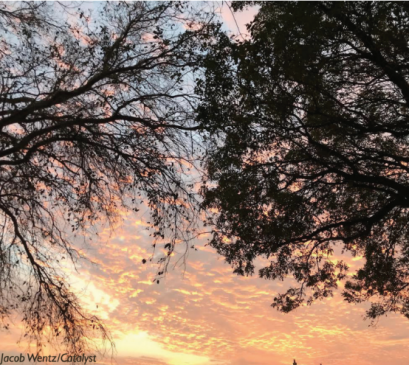
“A few noticeable trees that were cut down last year were the few in the Ham parking island near Y dorm,” McTigue said. “There was a large dead oak tree that had Spanish Moss growing on it, a dead Cabbage Palm and a dying Cabbage Palm that had a large invasive Strangler Fig growing on it. Because the oak tree was dead, it was losing branches that were falling onto cars and having a giant Strangler Fig growing on a dying palm in falling range of parked cars is risky. A small parking island like that is not a hospitable place for trees to grow, which is likely why these trees died.”
In addition to removals having to do with potential safety risks, many trees around campus have been recently removed due to a pine weevil infestation over the past year, most likely as a result of stress placed on trees during Hurricane Irma. Invasive species, which harm native plant growth, were also removed. While trees have been replanted to replace those that have been cut down, they tend to be smaller species of palm trees, which McTigue and Oberle say do not have the same benefits as larger trees with bigger canopies.

“Compared to seedlings, big trees are much more beneficial. Every time we lose one, our campus gets less healthy,” Oberle stated. “Last year, the landscape committee adopted several motions to plant more trees. The Tree Care Plan also sets a target for increasing campus canopy cover. However, we don’t have the budget or staff time [to devote specifically to tree plantings].”
Both McTigue and Oberle emphasized that every case of potential tree removal goes through the Landscape and Signage Subcommittee before any decisions are made. While students are invited to attend these meetings and the minutes of the Campus Tree Advisory Committee’s meetings are made public, neither call for student participation. New College’s community is not directly informed about the decisions that are made.
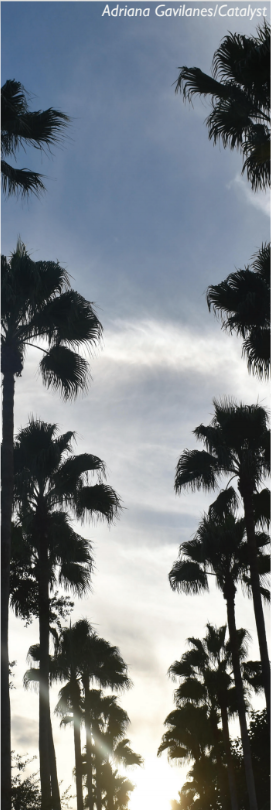
“I have had the idea for there to be a weekly or monthly newsletter of sorts about the college’s landscape. It could be in the Catalyst or in an email that goes out to students, faculty, and staff, providing information and updates about the physical aspects of the college, particularly landscaping and trees,” McTigue said. Additionally, students can currently get more involved in environmentalism on campus by attending and participating in the Council of Green Affairs (CGA) meetings, which are held Mondays at 8 p.m in HCL 7.
“As an alum, I am hoping that the Tree Campus USA guidelines will help push for more trees to be planted on campus in locations that are suitable for the tree and allows us to use the services that the tree provides,” McTigue stated. She also added, “I am glad students take notice to the trees on campus! If you are ever unsure about why things are happening or have questions about the process that the Physical Plant has, just ask.”
Information for this article was gathered from arborday.org and news.ncf.edu.

